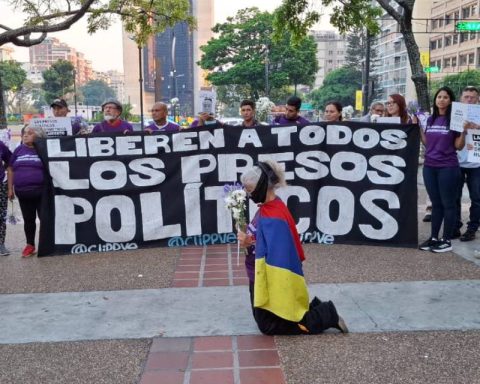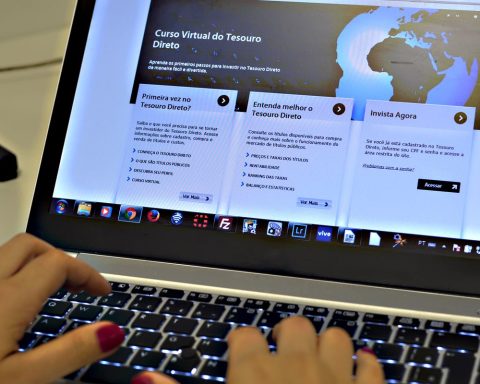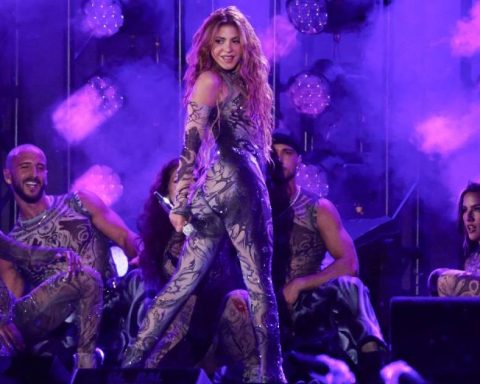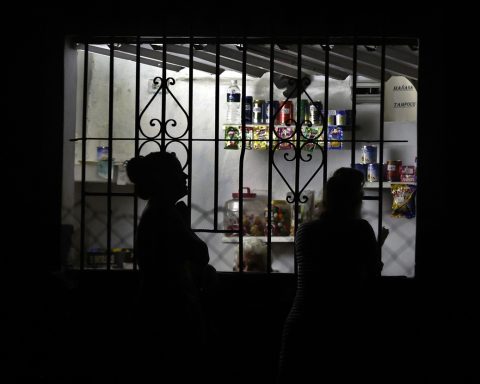The National Meat Institute (INAC) summoned the unions of the meatpacking industry and the butchers to launch a price agreement to “freeze” the prices of different beef cuts. In addition, it ensures that the “medium quality” roast, the emblem cut and most consumed by Uruguayans, have a maximum price of $230 per kg to the public. Today the president of the Republic Luis Lacalle Pou announced that the minimum VAT of 10% on the roast will be eliminatedsomething that will help reduce retail prices.
“We are going to exempt strip roast from VAT and there is an agreement with the different actors in the chain not to increase the prices of bone-in cuts,” said the president from Rio Branco where he participated in the inauguration of the rice harvest. The VAT will be done through a bill that the Executive will send to Parliament. The president reported that the tax waiver of this measure, according to what was discussed with the Minister of Economy Azucena Arbeleche, will be between US$650,000 and US$1 million, a figure that will depend on the sales volume of that cut.
interviewed by Informative Carve The president of INAC, Conrado Ferber, commented this Friday that the Executive Branch summoned the meatpacking industry and the butchers to define how this price agreement will be implemented for the public starting next week. The hierarch commented that the “commitment” of the refrigerators to freeze prices for 30 a month to reduce market volatility.
“Today what is on the table is a commitment from the industry to freeze the latest price list and that there are no more variants. The butchers were announcing new increases in the short term”, he remembered. The hierarch indicated that for the “tranquility” of the chain operators, the refrigeration industry assumes the commitment to freeze the bone-in cuts for a month. In addition, Ferber indicated that today President Lacalle will resolve whether to approve the proposal to eliminate the minimum VAT of 10% on barbecue for the same period of time.
The head of the INAC ruled out that this agreement could generate any impact on the price for the fat cattle that the producers sell to the refrigerators. “The international market is still open and the animal is not only roasted,” he argued.
“In these circumstances, what is needed is commitment. Yesterday I heard the members of the Union of Meat Vendors calling for this measure (for the elimination of VAT on roast beef). Well, Now they have to fulfill it and it has to reach the consumer. What has stopped us the most in recent days is that we did not achieve the chain’s commitment that these benefits offered by refrigerators and this (tax) reduction made by the government reach the consumer, “he said.
Ferber indicated that the objective is that “cheap and good roast” reaches the consumer because then that product arrives and the tip (of low quality) is removed and sold as part of the agreement and the rest (of higher quality) is sold at a different price. “We are going to put everything on the table, but let’s be honest and assume the commitment,” he said. He added that the consumer “will have to be demanding” in the butcher shops and that the INAC will be controlling that the volumes of that roast leave the refrigerators for the supply.
Percentages that “confuse” and those that “get on the bandwagon”
The president of INAC made some clarifications about the adjustments that beef has processed in recent weeks because it gave the impression that “prices” had gone “to the clouds” something that “called his attention” considering his position. “Yes, it went up, but let’s go to reality. From the December price lists of the meat that comes out of the refrigerators, the asado increased from 3% to 4% in March”, which is equivalent to about $5 to 7% per kg. “This is easily verifiable because they are price lists that are in the hands of butchers and there is no way to hide the information,” said Ferber. That yields an industry roast price on a shaft of $240 per kg. To that price, we must then add the margins of the distributors and the butchers.
As reported to El Observador by the president of the Union of Meat Vendors (UVC), Alfonso Fontenlathe price of meat increased by 25% since the end of January. Thus, considering the three most demanded products in neighborhood butchers, the price of minced meat ranges from $250 to $400 per kilo, that of roasts from $290 to $450 per kg, and the price of butt pulp for making milanese steaks already cut ranges from $450 to $550 per kg.
“Many times in these circumstances of war, actors who see an opportunity get on the bandwagon, which is legal but confuses people and causes a situation exactly as they are describing it. Meat went up but let’s not talk about 25% because it is drop a bomb that is not such,” said Ferber. On the other hand, the head of the INAC reported that the price of the half bovine beef rose 10% per kg compared to the price list that was in force last December.
The measure that was taken with the chicken
The Ministry of Livestock, Agriculture and Fisheries (MGAP) released in recent hours a “significant” number of pending poultry meat import permits to increase local supply and reduce its sale price to the public. “It is a significant volume and we hope that it will have an impact in the coming weeks as this merchandise begins to arrive in the country,” An official source told El Observador.
According to the monthly price report for February published by the Ministry of Economy and Finance, the kg of chicken in the main supermarket chains in Uruguay ranges from $157 to $170 per kg. Meanwhile, in butcher shops, the price of chicken is currently between $130 to $170 per kg.
“In Uruguay the price of chicken meat is cheaper than other proteins such as beef, but compared to other countries it is expensive,” the source explained. For this reason, it was that the Executive Power took as first measure “speed up permissions” that different private agents had presented to the MGAP authorities.
Chicken consumption has accelerated considerably in the last three years and would have reached 23.2 kg in 2021, which marks a growth of 27% in that period. In 2018, consumption per person was 18.3 kg, according to INAC data.















